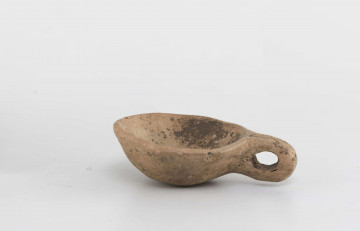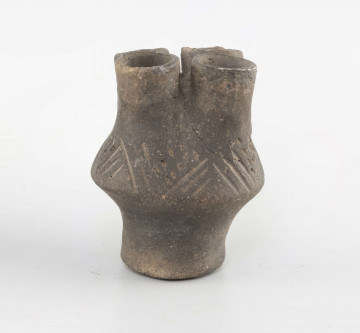
Dish with a nipple
National Museum in Lublin
Part of the collection: Set of archaeological relics found in the Lublin Region
The discovery of this small clay vessel was made in Bliskowice in Kraśnik County in 1959. As it often happens, also this time the discovery of the artifact was accidental.
Its history began with the extraction of sand by local farmers. As it turned out later, this is how they compromised the tomb of the Lusatian culture, which existed in this area over 2,500 years ago. Informed by the discoverers archaeologists explored the place, extracting, apart from the above-mentioned strainer vessel, a dozen more, as well as partially melted brown wires, and human bone remains.
Until our times, the vessel has survived in fairly good condition, almost complete. The holes (except for two) shown in the photo were punched from the inside of the vessel. The two bubbles visible on the surface are traces of the walls not being completely punctured.
What purpose could such a vessel serve?
Apart from the immediate association with a colander used for food products (both liquid and bulk), could it actually have a different function?
Similar vessels have been found at other archaeological sites, and after careful analysis traces of milk processing have been found in some of them. They were probably made of milk curd, which was drained after acidification and heating.
Why was it found in the grave?
Was it just a funeral gift? Or did the vessel play a different role? It is impossible to definitely confirm or deny that the dishes produced in such way were a part of a funeral ritual, as the rituals are unfortunately completely elusive for us.
Author / creator
Dimensions
cały obiekt: height: 5,5 cm
Object type
dish
Technique
firing
Material
clay
Creation / finding place
Owner
The National Museum in Lublin
Identification number
Location / status

National Museum in Lublin

National Museum in Lublin

National Museum in Lublin
DISCOVER this TOPIC
National Museum in Lublin
DISCOVER this PATH
Educational path